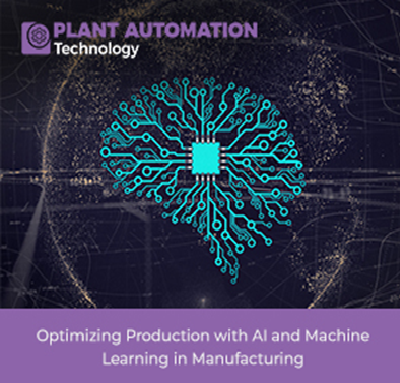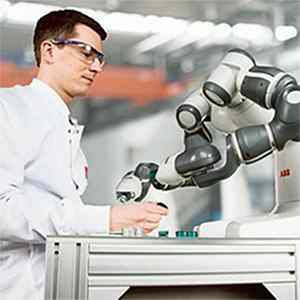Optimizing Production with AI and Machine Learning in Manufacturing

Introduction
In the swiftly changing domain of manufacturing, maintaining competitiveness necessitates the adoption of cutting-edge technology. Among these innovations, Artificial Intelligence (AI) and Machine Learning (ML) stand out as transformative forces reshaping production procedures, empowering manufacturers to boost efficiency, cut expenses, and elevate product quality. This article delves deep into the transformative impact of AI and ML on manufacturing, offering real-world instances and examining the challenges and prospects they bring forth.
I. AI and ML's Significance in Manufacturing
A. Predictive Maintenance
Among the pivotal applications of AI and ML in the manufacturing sector, predictive maintenance takes center stage. Through the analysis of sensor data from machinery, AI algorithms have the capacity to foresee potential equipment failures. This capability empowers manufacturers to proactively plan maintenance, thereby curbing downtime and circumventing expensive breakdowns. For instance, General Electric successfully implemented a predictive maintenance system, leading to annual savings of up to $200 million by mitigating unplanned downtime.
B. Quality Control
AI-driven quality control systems can identify defects and anomalies in real time, ensuring that only products meeting stringent quality standards are shipped to customers. Computer vision systems can inspect products at high speeds and with remarkable precision. BMW, for instance, uses AI-powered cameras to inspect the paint quality of its cars, reducing defects and improving customer satisfaction.
C. Enhancing Process Efficiency
AI and ML algorithms possess the capability to scrutinize extensive datasets for the purpose of refining production processes. They excel in identifying intricate patterns and correlations that frequently elude human operators. This results in heightened efficiency, diminished waste, and more effective resource allocation. An example of this transformative potential can be seen in Procter & Gamble's utilization of AI to fine-tune its supply chain, resulting in a remarkable reduction of $1 billion in inventory levels while concurrently elevating service standards.
D. Advancing Supply Chain Operations
AI stands as a potent tool for optimizing supply chain management through demand prediction, inventory level optimization, and enhanced logistics. Noteworthy organizations, such as Amazon, have harnessed AI to predict customer demand and refine their warehousing processes, culminating in swifter delivery timelines and reduced operational costs.
II. Real-World Examples
A. Foxconn
Foxconn, a major electronics manufacturer, has implemented AI-driven robots in its factories to perform tasks like sorting, quality control, and packing. These robots work alongside human workers, improving efficiency and reducing labor costs. Foxconn's embrace of AI has increased its production capacity and reduced errors in the manufacturing process.
B. Tesla
Tesla utilizes AI and ML extensively in its manufacturing processes. The company uses AI-powered robots to assemble electric vehicles, leading to increased production efficiency. Additionally, Tesla's autonomous robots can move materials around the factory, further streamlining operations.
C. Siemens
Siemens employs AI for predictive maintenance in its gas turbines. By analyzing sensor data from turbines in the field, Siemens can predict when maintenance is required, reducing downtime and saving on maintenance costs. This predictive maintenance approach has also improved the overall reliability of Siemens' turbines.
III. Challenges and Opportunities
A. Data Security
The integration of AI and ML into manufacturing processes raises concerns about data security. Manufacturing facilities often handle sensitive data, and a breach could have severe consequences. Ensuring robust cybersecurity measures is crucial when implementing AI and ML in manufacturing.
B. Workforce Skills
Manufacturers need to invest in training their workforce to operate alongside AI systems effectively. Upskilling employees to work alongside machines and understand AI-generated insights is essential for a smooth transition.
C. Cost of Implementation
While AI and ML can offer significant long-term cost savings, the initial implementation can be expensive. Manufacturers must carefully weigh the upfront costs against the potential benefits.
D. Ethical Contemplations
As AI and ML progressively entrench themselves in the manufacturing landscape, ethical deliberations emerge as crucial focal points. Concerns such as job displacement and algorithmic bias necessitate attention. Manufacturers should conscientiously evaluate the societal ramifications of their AI implementations and undertake measures to alleviate adverse effects.
IV. Future Trends in AI and ML for Manufacturing
A. Autonomous Manufacturing
The next frontier in manufacturing is the concept of autonomous manufacturing, where AI and ML systems take on an even greater role in decision-making and execution. This entails not only optimizing production but also enabling entire factories to operate with minimal human intervention. For example, autonomous robotic systems can handle production, maintenance, and quality control with little to no human involvement.
B. Innovative Design Paradigm
Generative design, propelled by AI, affords manufacturers the capability to delve into a multitude of design prospects and cherry-pick the most optimal option, all in line with predefined criteria encompassing cost, weight, and performance. This has the potential to usher in a revolution in product design, giving rise to creations that are not only more efficient but also brimming with innovation.
C. Augmented Reality (AR) and Virtual Reality (VR) Integration
The fusion of AR and VR technologies with manufacturing processes is on a steady rise, enhancing training, maintenance, and design functions. Workers now have the capability to access real-time data, instructions, and visual aids, resulting in heightened productivity and a reduction in errors.
D. Sustainable Manufacturing
AI and ML can help manufacturers minimize environmental impacts by optimizing resource usage, reducing waste, and designing eco-friendly products. Sustainable manufacturing practices are not only environmentally responsible but also appeal to a growing number of environmentally conscious consumers.
V. Overcoming Challenges
To successfully harness the power of AI and ML in manufacturing, companies need to address challenges head-on. Data security is paramount, and robust cybersecurity measures must be in place to protect sensitive manufacturing data from breaches or cyberattacks. Workforce development is also essential, as employees need to be trained to collaborate effectively with AI systems. This includes understanding data analytics, interpreting AI-generated insights, and ensuring seamless human-machine cooperation.
Balancing the initial implementation costs can be challenging, but it's crucial to recognize that the long-term benefits often far outweigh these upfront expenses. Investing in AI and ML can lead to substantial cost savings through improved efficiency, reduced downtime, and optimized resource utilization.
Furthermore, ethical considerations should guide AI implementations. Manufacturers should actively address job displacement concerns by offering retraining and reskilling programs for affected employees. They should also be vigilant in eliminating algorithmic biases to ensure fairness in decision-making processes.
VI. The Path Forward
Manufacturers who embark on the journey to optimize production with AI and ML can expect to see improvements in every aspect of their operations. From enhancing product quality and streamlining production processes to reducing costs and increasing competitiveness, the benefits are substantial. As technology continues to advance, staying ahead in the manufacturing sector requires embracing these transformative technologies.
VII. Conclusion
The infusion of AI and ML into manufacturing signifies a groundbreaking journey teeming with substantial potential for businesses. Spanning from predictive maintenance to supply chain optimization and more, these technologies are orchestrating a profound transformation in the way manufacturing operations are executed. Concrete instances from industry leaders like Foxconn, Tesla, and Siemens underscore the tangible benefits that AI and ML bestow upon the manufacturing sector.
However, manufacturers must remain vigilant about addressing challenges such as data security, workforce skills, implementation costs, and ethical considerations. These challenges are surmountable with proper planning and investment. Moreover, the future holds exciting prospects with the emergence of autonomous manufacturing, generative design, and the incorporation of AR and VR technologies.
Manufacturers who embrace AI and ML as integral components of their production processes stand to gain a competitive edge in today's dynamic market. The journey towards optimizing production through AI and ML may require effort and resources, but the rewards in terms of efficiency, cost savings, and innovation are well worth the investment. As the manufacturing landscape continues to evolve, AI and ML will remain key drivers of progress and success in the industry.







